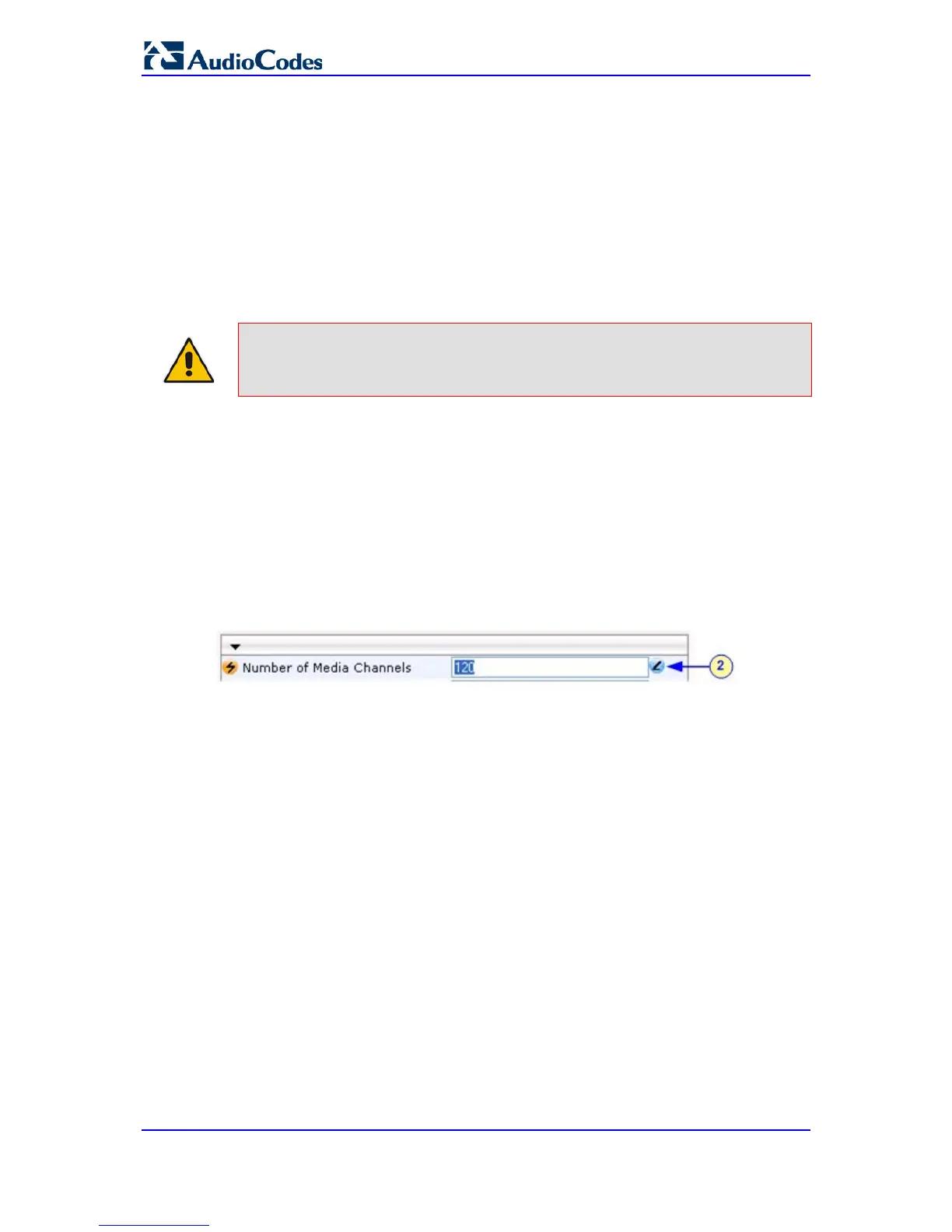22.2.1 Step 1: Enable the IP-to-IP Capabilities
This step describes how to enable the device's IP-to-IP application.
To enable IP-to-IP capabilities:
1. Open the Applications Enabling page (Configuration tab > VoIP menu >
Applications Enabling submenu > Applications Enabling).
2. From the 'IP to IP Application' drop-down list, select Enable.
3. Click Submit.
4. Save the setting to flash memory ("burn") with a device reset.
Note: For the IP-to-IP Application feature, the device must also be installed with the
appropriate Software License Key.
22.2.2 Step 2: Configure the Number of Media Channels
The number of media channels represents the number of digital signaling processors
(DSP) channels that the device allocates to IP-to-IP calls. The remaining DSP channels
can be used for PSTN calls. Two IP media channels are used per IP-to-IP call.
To configure the number of media channels:
1. Open the IP Media Settings page (Configuration tab > VoIP menu > IP Media > IP
Media Settings).
Figure 22-6: Defining Required Media Channels
2. In the 'Number of Media Channels' field, enter the required number of media channels
(in the example above, "120" to enable up to 60 IP-to-IP calls).
3. Click Submit.
4. Save the settings to flash memory ("burn") with a device reset (see 'Saving
Configuration' on page 624).
22.2.3 Step 3: Define a Trunk Group for the Local PSTN
For incoming and outgoing local PSTN calls with the IP-PBX, you need to define the Trunk
Group ID (#1) for the T1 ISDN trunk connecting the device to the local PSTN. This Trunk
Group is also used for alternative routing to the PSTN if connectivity with the ITSP fails.
To configure the Trunk Group for local PSTN:
1. Open the Trunk Group Table page (Configuration tab > VoIP menu > GW and IP to
IP > Trunk Group > Trunk Group).
2. Configure Trunk Group ID #1 (as shown in the figure below):
• From the 'From Trunk' and 'To Trunk' drop-down lists, select 1 to indicate Trunk 1
for this Trunk Group.
• In the 'Channels' field, enter the Trunk channels or ports assigned to the Trunk
Group (e.g. 1-31 for E1 and 1-24 for T1).

